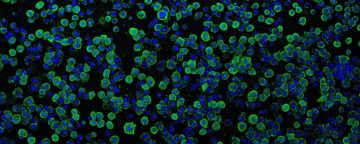Rohini Subrahmanyam in The Scientist:
 Sophisticated, effective drugs to treat diseases and other conditions aren’t any good if they can’t reach the part of the body or the specific cells that they’re designed to target. However, scientists have found a new way to deliver tiny proteins into specific cells, using small syringelike structures naturally found on certain bacteria. The study, published in Nature on March 29, could lead to better drug-delivery systems in medicine. “Delivery remains a critical bottleneck in medicine,” said study coauthor and MIT researcher Joseph Kreitz. “Although many powerful new therapies have been developed over the past several decades, we will need a deep bench of options to get these therapies into the right cells in the body.”
Sophisticated, effective drugs to treat diseases and other conditions aren’t any good if they can’t reach the part of the body or the specific cells that they’re designed to target. However, scientists have found a new way to deliver tiny proteins into specific cells, using small syringelike structures naturally found on certain bacteria. The study, published in Nature on March 29, could lead to better drug-delivery systems in medicine. “Delivery remains a critical bottleneck in medicine,” said study coauthor and MIT researcher Joseph Kreitz. “Although many powerful new therapies have been developed over the past several decades, we will need a deep bench of options to get these therapies into the right cells in the body.”
In the study, Kreitz, Broad Institute researcher Feng Zhang, and the rest of their team took inspiration from nature, relying on tiny microbes that have found a way around this problem. Endosymbiotic bacteria, or bacteria that depend on their host cells for survival, have developed tools such as the extracellular contractile injection system (eCIS), in which the bacteria use tiny syringelike nanomachines to inject protein payloads into their host cells. The host cells, in the case of the bacterium Photorhabdus asymbiotica, are the cells lining the gut of nematodes. In the new study, Zhang and the team re-engineered these so-called nanosyringes from Photorhabdus to target and deliver a wide variety of proteins into human and animal cells.
More here.
